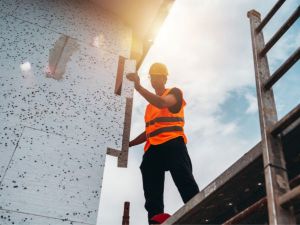Sustainability and Green Building Trends in Construction
Source: Daniel Dorgan, CPA, McKonly & Asbury
 In recent years, the construction industry has taken major strides in designing and completing increasingly sustainable and environmentally conscious projects. This article will look at some of the underlying topics around this movement and address what is driving these changes, benefits, costs, and challenges of sustainable and green building.
In recent years, the construction industry has taken major strides in designing and completing increasingly sustainable and environmentally conscious projects. This article will look at some of the underlying topics around this movement and address what is driving these changes, benefits, costs, and challenges of sustainable and green building.
Energy-efficient building designs are at the forefront of green construction. Leadership in Energy and Environmental Design (LEED) certifications are the most prominent in the industry, promoting a “framework for healthy, highly efficient, and cost-saving green buildings, which offer environmental, social, and governance benefits.” According to the U.S. Green Building Council (USGBC), LEED certifications have grown at an average of 20% over the past 5 years and over 6.99 billion gross square feet were registered from 2017-2021.
While seen as the gold standard of green building, there are drawbacks to the highly sought-after certification. Challenges include the additional cost of gaining and maintaining a LEED certification, as well as the availability and cost of obtaining green and sustainable materials. Studies conducted by the World Business Council for Sustainable Development (WBCSD) indicate that the cost on average of a green building compared to a traditional building would be 17% higher. The USGBC shares that the initial cost of a green building is only 2-3% higher than traditional building techniques.
Renewable energy, such as solar and wind, has also been a subject on the rise over the past few years. The industry saw record power capacity additions during 2022 with global investment across all energy transition technology reaching $1.3 USD, per the International Renewable Energy Agency (IRENA).
Benefits Sustainable Construction
The benefits to greener and more sustainable construction are clear. The decrease in carbon emissions and the reduction on the world’s dependence of fossil fuels serve as two primary drivers for the switch to green building. According to USGBC and EPA studies, a range of programs have helped lower carbon emissions by 30% along with reducing energy use by 26%.
Outside of the environmental impact, builders can expect incentives related to increased property values and can benefit from several tax incentives. Popular incentives include the IRC 179D energy efficient commercial buildings deduction for energy efficient commercial building property (EECBP) and/or energy efficient commercial building retrofit property (EEBRP), as well as the 45L tax credit for new energy efficient homes.
As described above, the idea of sustainable and green building is not simply a trend, but a global movement towards a more sustainable future. The architecture, engineering, and construction industry are at the forefront of this movement and, as such, will encounter their fair share of the benefits and challenges.
For more information regarding McKonly & Asbury’s Construction experience, be sure to visit the Construction Services page, and don’t hesitate to reach out to a member of the Construction team.
